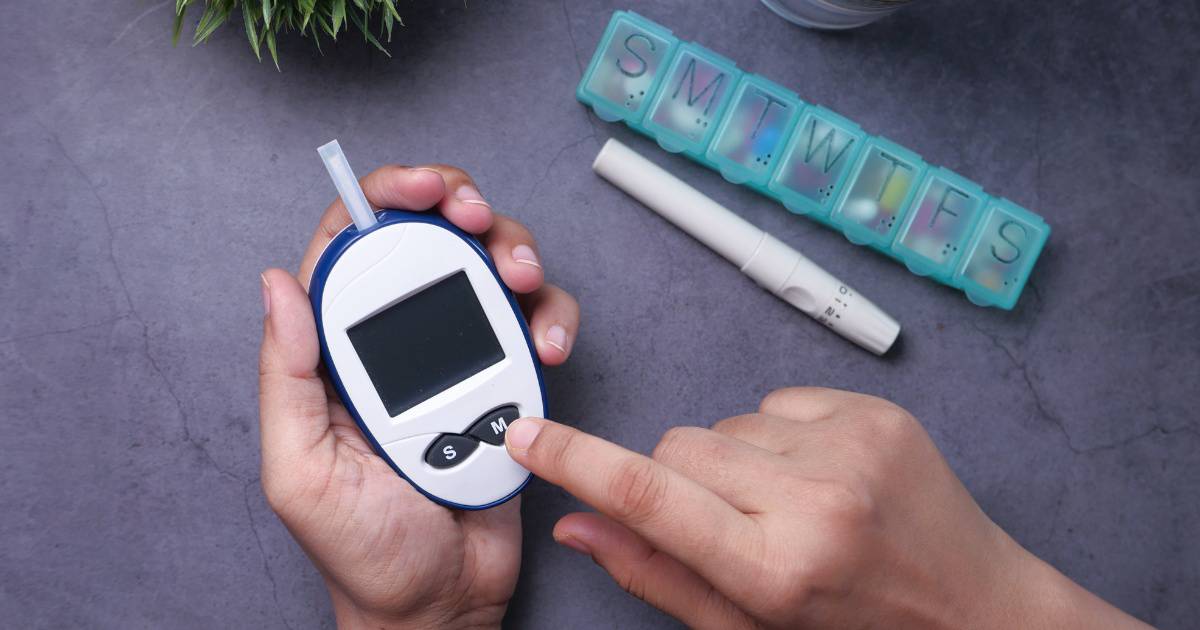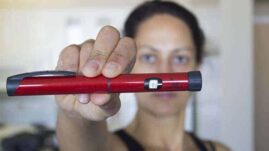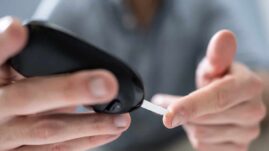Experiencing high blood sugar from time to time is part of life if you live with diabetes.
However, many people do not know what high blood sugar actually feels like, sometimes until glucose levels are dangerously high.
This article will explore the signs and symptoms of high blood sugar, what it feels like when it is high, and what you can do to quickly bring it down.

Table of Contents
- What is a high blood sugar level?
- What are the symptoms of high blood sugar?
- What are the signs that you may have chronic high blood sugar?
- What does high blood sugar feel like?
- How can you bring high blood sugar down quickly?
- Do all people feel high blood sugar levels?
- What are the signs that my blood sugar is dangerously high?
- How long does it take to feel better after a high blood sugar?
- Can drinking lots of water bring down your blood sugar?
What is a high blood sugar level?
What is considered high blood sugar will vary from person to person, but generally, any fasting blood sugar over 125 mg/dL is considered diabetic.
Most people with diabetes will begin to feel the symptoms of high blood sugar between 180-200 mg/dL.
Blood sugars over 200 mg/dL should be treated with insulin.
Any blood sugar over 250 mg/dL requires a urine test for ketones to rule out diabetic ketoacidosis (DKA).
DKA is a dangerous acute complication of diabetes that can be fatal if not treated quickly.
What are the symptoms of high blood sugar?
Symptoms also may vary from person to person.
Early symptoms of high blood sugar include:
- Extreme thirst
- Frequent urination
- Dry mouth
- Fatigue
- Headache
- Achy muscles
- Slight changes to vision
Symptoms of prolonged high blood sugar include:
- Nausea
- Vomiting
- Blurry vision/changes to vision
- Fruity-smelling breath
- Confusion
- Weight loss
- Flushed face
- Coma
If left untreated, prolonged high blood sugar can lead to DKA, where the body becomes dehydrated, electrolytes become unbalanced, and the blood becomes acidic.
In this state, it can be very difficult to lower blood sugar levels.
It requires emergency medical assistance to bring blood sugars down slowly and safely to avoid complications and death.
What are the signs that you may have chronic high blood sugar?
In other cases, people with diabetes may suffer from chronic high blood sugar levels.
You may have blood sugar levels that are outside of the range of normal, but not quite high enough to be considered a medical emergency.
Sometimes chronic, moderately-high blood sugar levels do not have detectable symptoms.
This can be the case in prediabetes and even LADA (latent autoimmune diabetes in adults), which has a slower onset.
Additionally, many people with type 2 diabetes who are not yet on insulin may struggle for years with higher-than-normal blood sugar levels.
This may not be detected if they’re not frequently testing their blood sugar levels.
Over the long term, moderately high blood sugar levels can lead to diabetes complications such as blindness, kidney failure, heart disease, heart attacks, and strokes.
It may even lead to lower-leg amputations and premature death.
Keep these signs of chronic, moderately-high blood sugar levels in mind:
- Swollen/bleeding gums
- Slow-healing wounds
- Yeast infections
- Dry skin/blisters
- Tingling and numbness in the hands and feet
Contact your doctor if you are at high risk for prediabetes or diabetes and have been struggling with any of the aforementioned symptoms for two or more weeks without relief.
You may want to be tested for diabetes, or you can even buy a glucometer over-the-counter at your local pharmacy and test your blood sugar at home.
What does high blood sugar feel like?
High blood sugar can be described as having a full-body ache, an unquenchable thirst, and a splitting headache.
Sometimes symptoms can hit quickly, whereas other symptoms may take longer to develop.
Some people develop dry eyes and just feel wrung out.
People feel the need to urinate frequently, which dehydrates them, and repeats the cycle of thirst and polyuria.
If this is left untreated for several weeks, people start losing weight rapidly, and their vision blurs.
Some people become extremely fatigued and lethargic, developing flu-like symptoms.
Many symptoms will begin to dissipate once blood sugar levels come back down to a normal range.
While your blood sugar level is high, remember to take insulin (if you’re prescribed it), and stay hydrated by drinking plenty of water to help prevent dehydration.
Contact your doctor if your blood sugar doesn’t go below 250 mg/dL and you have moderate to high levels of ketones for several hours or more, despite treatment.
How can you bring high blood sugar down quickly?
Taking insulin is the fastest way to bring your blood sugar down if you have been diagnosed with insulin-dependent diabetes. Never take insulin if it is not prescribed to you.
Additionally, if you’re experiencing insulin resistance and high blood sugar (due to hormonal changes or a fatty meal you’ve recently eaten) make sure to drink plenty of water.
Finally, getting a little exercise can help lower blood sugars faster. Even just a 15-20 minute walk or bike ride can help.
Read more: How to Bring High Blood Sugar Down Quickly
Do all people feel high blood sugar levels?
No. Just like not all people feel low blood sugars (hypo-unawareness) either.
Your body will become used to a blood sugar range.
If your blood sugars typically run higher, you may not feel a 200 mg/dL blood sugar level like someone who regularly keeps their blood sugars around 80 mg/dL.
This is why it is so important to test your blood sugar regularly with either a glucometer or a continuous glucose monitor (CGM).
Try to track and treat high blood sugars before they become insulin resistant and dangerous.
Additionally, of people who have prediabetes, more than 80% do not even know they have the condition.
This is because blood sugar levels are higher than normal, but not high enough to constitute a diabetes diagnosis.
Oftentimes, moderately high blood sugar levels are difficult to detect, even if they’re doing damage to the body.
What are the signs that my blood sugar is dangerously high?
Always test your blood sugar with a glucometer if you suspect you have dangerously high blood sugar.
If your blood sugar is over 250 mg/dL, test for ketones.
If you have both high blood sugar and ketones, you need to be extra vigilant about getting your blood sugar down so you do not develop DKA.
Call your doctor or 911 right away if you are vomiting, experience blurry vision or changes to your vision, have fruity-smelling breath, or become confused and disoriented.
How long does it take to feel better after a high blood sugar?
Most people feel better from acute high blood sugars within a few hours.
Sometimes people can be side-lined from high blood sugar for the better part of a day.
However, symptoms usually go away quickly after blood sugar levels come back down to a normal range.
If your blood sugar has been high for a long time (days or weeks), and you’re experiencing ketones, it may take you a lot longer to feel better—especially if you’ve been hospitalized.
During a hospital stay, doctors will rehydrate you and help rebalance electrolytes.
It may take a few weeks to recover from high blood sugar levels that leave you hospitalized or in DKA.
Can drinking lots of water bring down your blood sugar?
Drinking water alone will not bring down blood sugar levels.
If you take insulin, only insulin can bring them down.
However, if you’ve taken insulin, staying hydrated by drinking water can help bring down blood sugars faster than if you’re dehydrated.
Dehydration can also lead to insulin resistance, which can make bringing down blood sugar levels a slow and stubborn process.
Water can assist in lowering blood sugar levels in the following way: when your blood sugar is high, your body will try and flush the excess glucose out of your blood through your urine.
That is why frequent urination is a common symptom of high blood sugar.
Drinking extra water can assist your kidneys in helping to flush out some of the extra glucose from the blood into the urine.



